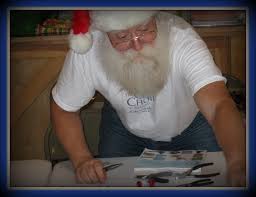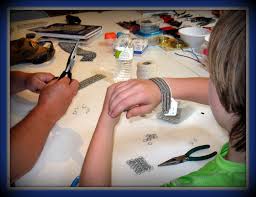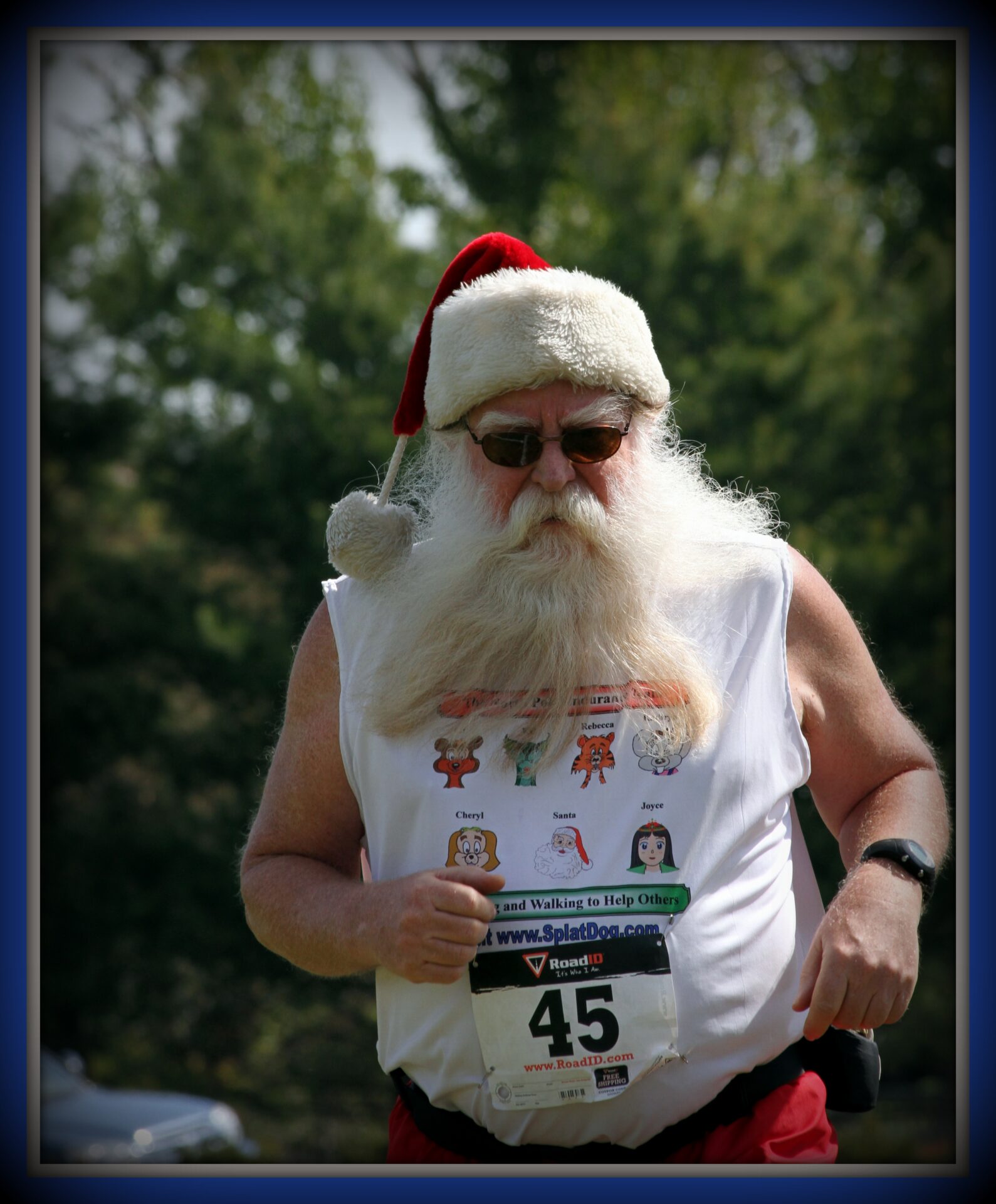Meet Steve Schreurs, Artist in Residence August 3 – 9, 2014
Artist In Residence (AIR) Interview 2014
60 Years in a Paragraph
 My background is an unlikely hodgepodge of experiences. As a young man, I was a Boy Scout where I acquired my love of nature and knot tying. I then progressed on to being a farmer, cowboy and professional canoe guide. In college, I earned a Bachelor’s Degree in Chemical/Nuclear Engineering. Along the way, I taught myself about this new fangled thing called digital computers and was married and had two sons. For several years, I used my Chemical Engineering, Nuclear Engineering and Computer Science knowledge to create computer simulations for nuclear power plants and became one of the world’s leading experts in that field. As time passed, the Computer Science skills become more important and I migrated to the field of Information Technology. Today I work for the Johns Hopkins University Applied Physics Laboratory in the field of Information Technology. Although I am not a professor, part of my job is to teach other people the how and why of the work that I do. I am very evolved in many charitable activities (for which I am Santa Claus) and for them I teach macrame, cooking, cartooning and chainmail. I am artist in residence at Searsport Shores the first week of August and teach chainmail, macrame, and cartooning. I am ambidextrous which helps with some of my activities like making chainmail or paddling a canoe.
My background is an unlikely hodgepodge of experiences. As a young man, I was a Boy Scout where I acquired my love of nature and knot tying. I then progressed on to being a farmer, cowboy and professional canoe guide. In college, I earned a Bachelor’s Degree in Chemical/Nuclear Engineering. Along the way, I taught myself about this new fangled thing called digital computers and was married and had two sons. For several years, I used my Chemical Engineering, Nuclear Engineering and Computer Science knowledge to create computer simulations for nuclear power plants and became one of the world’s leading experts in that field. As time passed, the Computer Science skills become more important and I migrated to the field of Information Technology. Today I work for the Johns Hopkins University Applied Physics Laboratory in the field of Information Technology. Although I am not a professor, part of my job is to teach other people the how and why of the work that I do. I am very evolved in many charitable activities (for which I am Santa Claus) and for them I teach macrame, cooking, cartooning and chainmail. I am artist in residence at Searsport Shores the first week of August and teach chainmail, macrame, and cartooning. I am ambidextrous which helps with some of my activities like making chainmail or paddling a canoe.
 What you will be teaching as Artist In Residence?
What you will be teaching as Artist In Residence?
I come prepared to teach three arts: chainmail (armor and jewelry), macrame, and cartooning. What usually happens is that I have so many students for chainmail and macrame I seldom get a chance to teach the cartooning. If I know in advance that a student would like to learn cartooning, I will set aside time for cartooning.
All three arts take time to learn the basics and even more time to broaden your knowledge. Macrame takes the least amount of time to learn and chainmail takes the most time to learn. Cartooning is somewhere in the middle. I am a master armorer for chainmail and teach all three basic types of chainmail: European (what you see in the movies), Persian (what some call Byzantine) and Asian (rarely seen). Most beginners can learn European and Asian weaves in a couple of days. Persian weave is much harder and should wait until a student is more advanced.
The most popular type of macrame today is “Survival Bracelets.” My students have so much fun with them and they are quick to make, we seldom go beyond the survival bracelets. The students end up making bracelets, anklets, dog collars, and leashes. I will have a knot sampler project and resource books with me. If a student would like to try more complex knots, time for that will also be available.
The cartooning I teach is character (or avatar) design. I start with simple characters like “Kilroy was here” dating from World War II. I will have several resource books for character ideas and sketching pointers.
What are your major projects for this year?
My biggest project for this year is a Japanese evening jacket (Haori). This jacket will include all three styles of chainmail. The body of the garment is Asian chainmail, the sleeves will be cuffed with Persian chainmail and the lapels will be 6 in 1 European chainmail. In addition, there is a very delicate Japanese flag design on the back of the garment.
I have also started a Captains jacket with a name design in it. This will be a European weave with lettering inlays and edge coloring.
How did you decide to become an artist?
I did not have a moment in my life where I decided to become an artist. I learned all of my skills for my creative activities because I needed them to accomplish something. I learned my basic knotting (macrame) skills as a Boy Scout and expanded upon that while I worked as a cowboy and a canoe guide.
I learned how to make chainmail when my sons asked for chainmail shirts as props for their role playing games. At $800 each we could not afford to buy chainmail shirts. This was before the days of the internet, so we used a picture from a museum catalogue and a magnifying glass to teach ourselves how to make chainmail.
I taught myself cartooning when I needed to create my Santa Claus coins to give to children who were brave enough to talk to Santa. In addition, I expanded my cartooning when I needed to create sports team t-shirts and singlets for my North Pole Endurance Team (did I forget to mention that I am a long distance runner and walker?). Becoming an artist just snuck up on me.
How did you develop your own artistic style?
For each of my arts, I develop a unique style. My general approach is to either take basic concepts or techniques and create interesting new combinations or extensions; or to try a totally new approach to creating an effect. My horseback riding and fencing (I fence foil left handed) styles are technically correct but a bit unusual. Not all of my attempts at something new are successful. For example, while I was cooking/cheffing for the YMCA (we feed 300 people a day) I created s new breakfast item “Bat Wings” which were black crepe suzettes. While the children and I thought they were great, many of the adults were not amused.
For my chainmail style, I combine the chainmail weave elements into new combinations. For example, I will transition from an Asian honey comb garment fabric to a Persian border to give a clean edge to a project. In addition, I vary the ring size to provide a more open (larger ring) or a more dense (smaller ring) texture to the project. I also use different metals to provide different colors and accentuate a particular part of the project.
What do your students find most surprising about you?
 As you can see from the answers to some of the other questions, I have a bit of a list of surprising experiences. The top two are that I am a chemical/nuclear engineer and that I participate in long distance endurance athletic events. When people meet me outside of my normal work role, they do not associate an artist, cook, runner or Santa with engineer. As a chemical/nuclear engineer I have had some very interesting assignment including working for three presidents of the United States (Jimmy Carter, Bill Clinton, and George W. Bush).
As you can see from the answers to some of the other questions, I have a bit of a list of surprising experiences. The top two are that I am a chemical/nuclear engineer and that I participate in long distance endurance athletic events. When people meet me outside of my normal work role, they do not associate an artist, cook, runner or Santa with engineer. As a chemical/nuclear engineer I have had some very interesting assignment including working for three presidents of the United States (Jimmy Carter, Bill Clinton, and George W. Bush).
When folks first meet me, they have no trouble recognizing me as Santa. After all, I look exactly as the “jolly fat man” should. What surprises them is that I run marathons (26.2 miles) and walk in the Susan G. Komen 3-Day (60 miles). I participate in over 200 miles of events every year and train approximately 1,000 miles each year. My longest running event is the Walt Disney World Marathon weekend (4 races in 4 days, 48.6 miles) and my longest walking event is the Komen 3-Day. All of the endurance events are used to raise money for charity and I raise between $3,000 and $15,000 every year.
Santa Steve goes more than the ‘Extra Mile’ for charity:
Here ’s an excerpt from the 2012 press release for 60milemen.org. Steve is Mr. December 2013 and in the 2014 commemorative calendar.
“Santa Steve of Olney is one of twelve brave men who are going all the way in the fight against breast cancer. Each year a non-profit corporation, 60-Mile Men Inc., produces a unique calendar to showcase these brave men and their dedication to the fight against breast cancer. What makes the calendar so unique are these men are not typical models. With ages ranging from their 20’s to their 70’s, these men are quite ordinary; except for their dedication to the fight against breast cancer. The calendar features each of the men going through their normal activities with just one difference – the clothing or, lack thereof. While certainly raising eyebrows, the calendar has been professionally photographed and designed.”
“In a cross between the ‘Full Monty’ and ‘Calendar Girls,’ these gentlemen are showing that cancer affects us all: young and old, in-shape, and well, not-so-in shape,” says Matthew Pickus, president and founder of 60-Mile Men, Inc. “People sometimes wonder why men participate in a breast cancer event. Cancer does not discriminate. Not only are 1% of breast cancer victims male, but cancer of every sort affects our mothers and fathers, sons and daughters. Anyone that has had a loved one with a cancer diagnoses knows that this affects everyone.”
The calendar men have participated in dozens of Susan G. Komen 3-Day for the Cure events and will do anything (obviously!) to help support those with breast cancer, and find a cure. As the calendar states: “Real Men Wear Pink…Or Nothing At All.” For more information visit http://www.60milemen.org/ ]
As an instructor, what is the best advice you can give a student?
Since I have several fields of art, my advice to the students does not address any specific art form. Much of this advice is good for sports, work, art or any endeavor you pursue. Whether you pick the field of art or the art picks you, make sure that you are pursuing something you love. To enjoy the activity and perform the best you are capable of in an activity, you must like what you are doing. Here is the advice I gave a young man as he was deciding what college major he would pursue. His father was pushing him to become a physics teacher because it was a safe bet and a steady job. The young man was not particularly interested in being a teacher but he loved cartography. The questions I posed to him were “Would you like to be taught by someone who was not enthusiastic about the subject? Will you enjoy going to work every day and feel that you have given your best?”
I am happy to say that he is very successfully working in the field he loves, Geographic Information Systems.
The second piece of advice is to take you time and learn your art well. I have personally experienced and observed many students trying to tackle too complex of a project too soon when learning a new skill. Break down the art into smaller components and learn the components first and then build them into more complex projects. I know this is hard to do because we are impatient to get to that “master piece,” but the patience pays off in many ways. Understanding the fundamentals will help you produce a better product and it will help you be more creative. A corollary to this advice is “perfect is the enemy of good enough.” Focusing on perfection often results in no improvement at all. Sometimes your art and your skills will have to evolve or you have to have a few failures to finally find what you are looking for. I have had some spectacular failures in my day, but I learn from them and improve with the next try.
My website is www.marathonsanta.com and I have some Artist In Residence photographs at:
https://www.flickr.com/photos/marathonsanta/sets/72157645920209012/
and chainmail photographs at:
http://www.flickr.com/photos/marathonsanta/sets/72157640190184083/
